END EXPLOITATION
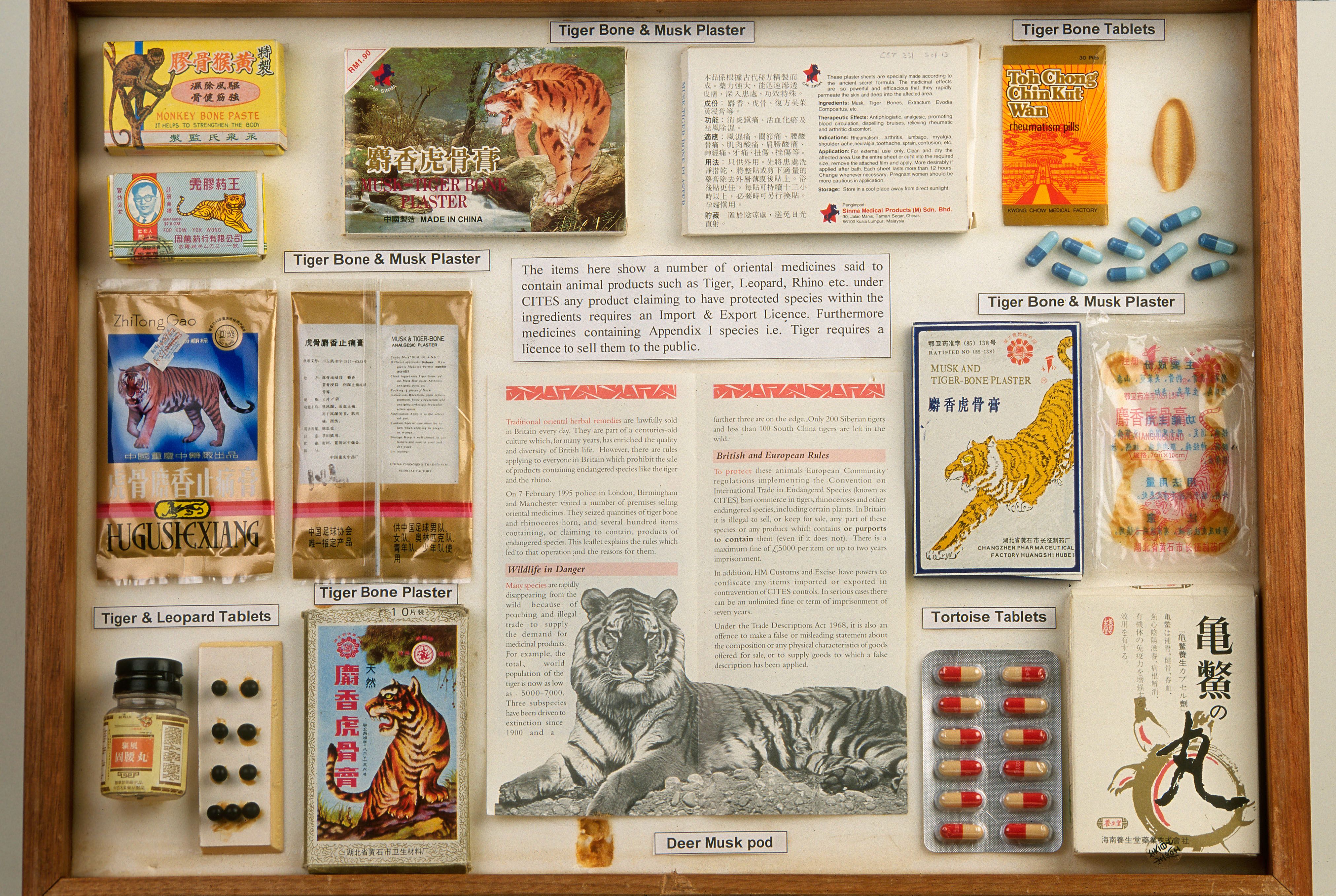
The illegal trade of tigers, their parts and products remains a constant threat to wild tigers. Driven by a demand for uses such as traditional medicines, health tonics, ornamentation and increasingly as a status symbol, their skin, teeth, bones and other body parts are big business.
Between January 2000 and June 2022 a total of 3,377 tigers were seized from traffickers, close to matching the number of tigers left in the wild today, at 4,500. WWF and TRAFFIC, the global wildlife trade monitoring network, are working together with governments, enforcement agencies, the private sector and others to break persistent illegal trade routes, while reducing demand for tiger parts through behavioural change approaches in major Asian markets. We are also working towards commitment and implementation from the governments in China, Lao PDR, Thailand, and Viet Nam to phase out tiger farms which, by feeding the trade from captive tigers, perpetuates and stimulates demand for tigers thereby threatening those in the wild.

Traditional medicine made with tiger parts, sold at a morning market in Mong La special administrative zone, Myanmar. © WWF-Myanmar
Traditional medicine made with tiger parts, sold at a morning market in Mong La special administrative zone, Myanmar. © WWF-Myanmar
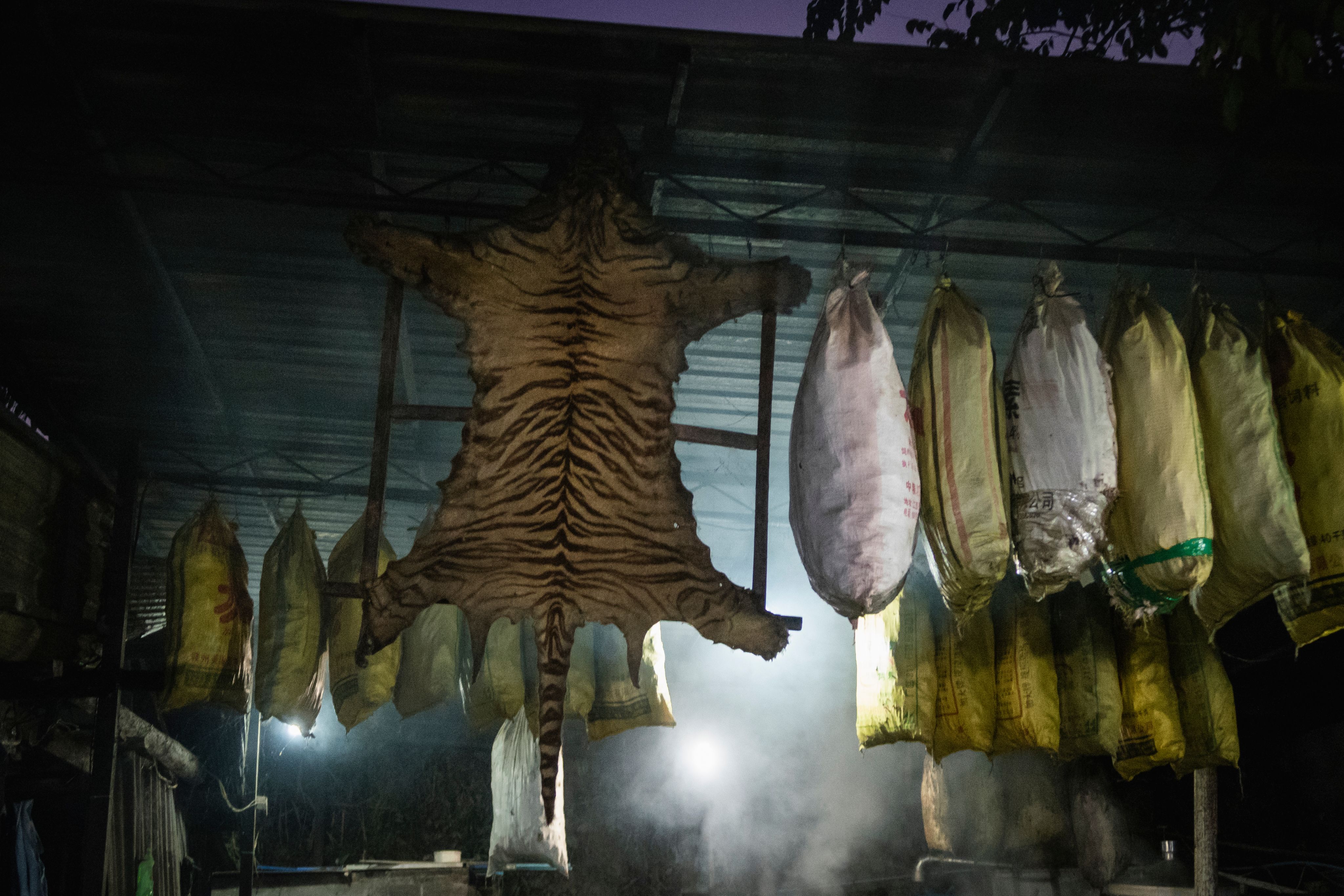
Tiger pelt displayed in the kitchen of a restaurant in Mong La special administrative zone, Myanmar. © WWF-Myanmar
Tiger pelt displayed in the kitchen of a restaurant in Mong La special administrative zone, Myanmar. © WWF-Myanmar
Tackling Tiger Trafficking Framework
The Tackling Tiger Trafficking Framework, which will help address the illegal trade in tigers and their parts and products, both from wild and captive sources, was launched in November 2022. The technical expertise of more than 12 partners were brought together to develop a key guidance document collating the best strategies, approaches, tools and resources available to break the tiger trade chains. The framework has already been referenced in the Global Tiger Recovery Program 2.0 briefing on combating trade and was launched at a side event at the 19th meeting of the Conference of the Parties to the Convention for International Trade in Endangered Species of Wild Fauna and Flora (CITES CoP19) in November 2022 in Panama.
WWF and partners will advocate the framework is used by governments and relevant law enforcement agencies in the development of their national tiger trade strategies. The framework should also be referenced and utilised within the Global Tiger Recovery Program 2.0, and in law enforcement meetings aimed at tackling organised wildlife crimes in Asia.

TRAFFIC's Skin & Bones Report
TRAFFIC’s Skin and Bones: Tiger Trafficking Analysis from January 2000–June 2022 reviewed new stark data showing an increasing trend in seizures, that evidences the illegal trade of tigers and their parts continues to threaten the future of wild tigers. Analysis of tiger seizure data between January 2000 and June 2022 across 50 countries and territories estimated a minimum of 3,377 tigers were confiscated by authorities as whole tigers, dead and alive, as well as a variety of tiger parts and products.
The release of the report before CITES CoP19 in November included a call for CITES Parties to fully implement the needed activities agreed through CITES, including stronger laws and enforcement on the illegal tiger trade, and actions to stop the involvement of tiger farms in trade.
This is seen as a flagship report on tiger trade trends, and is used by governments, NGOs, and other stakeholders to inform decision making. Whilst it’s not possible to determine the exact impact of this particular report, we expect that it contributed to the sense of importance in tackling tiger trade during the CITES CoP this year.
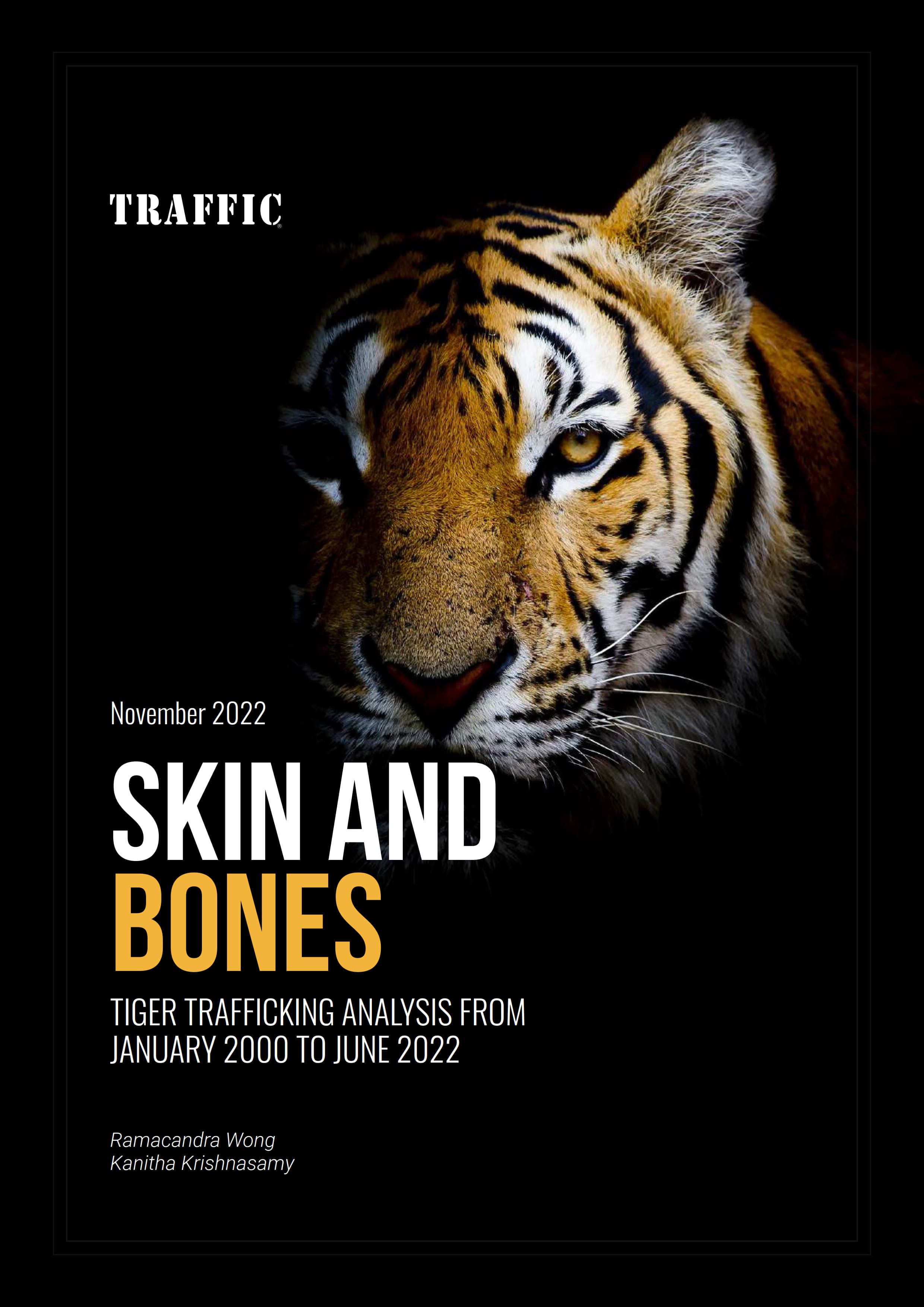

Captive tiger in the US. Photo by Ratanjot Singh on Unsplash
Captive tiger in the US. Photo by Ratanjot Singh on Unsplash
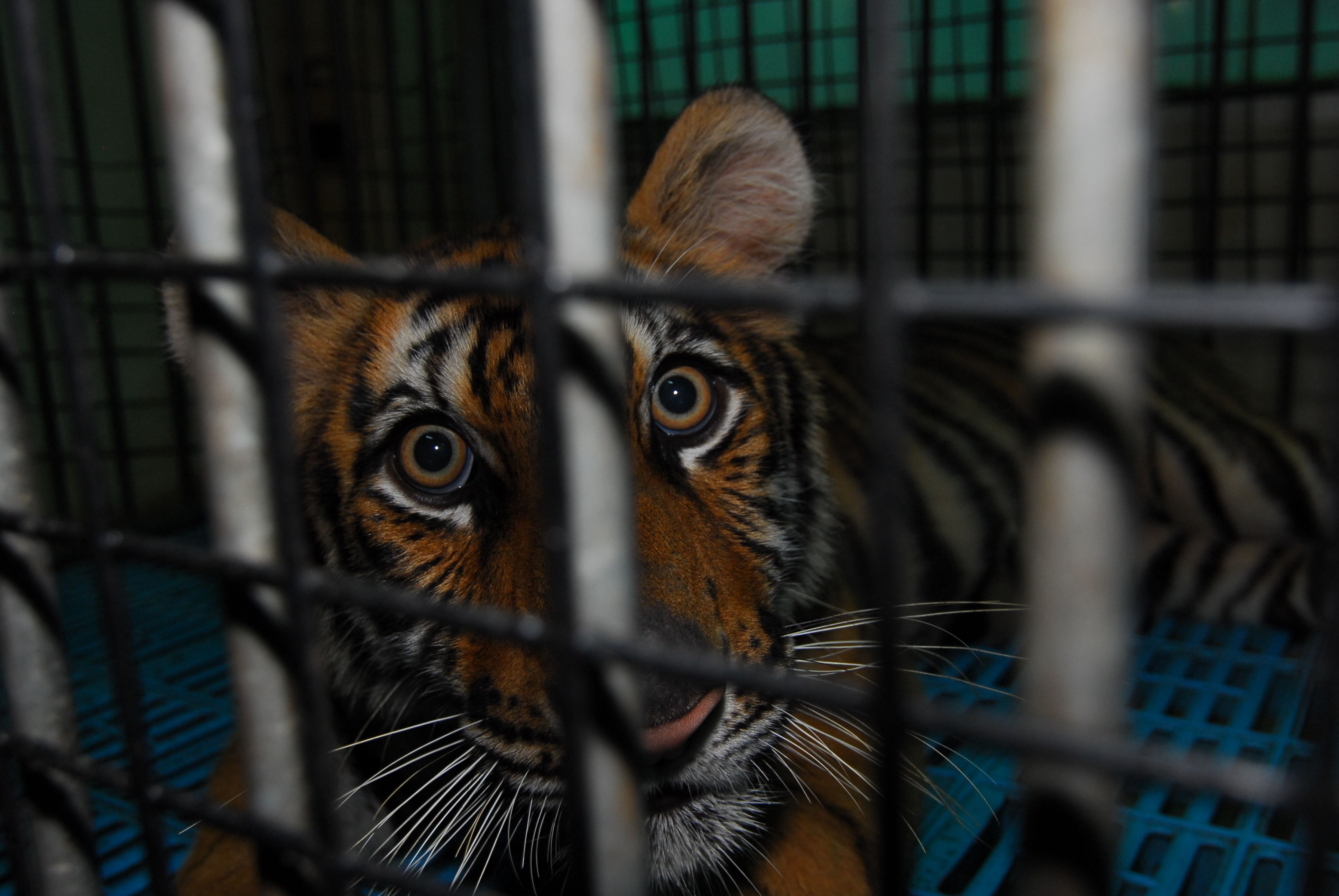
© Anton Vorauer / WWF
© Anton Vorauer / WWF
Addressing tiger trade beyond the Tiger Range
In the USA, on 29 July the House of Representatives passed H.R. 263, the Big Cat Public Safety Act and on 6 December it was passed unanimously by the Senate. This legislation will help prevent captive tigers from ending up in the illegal trade in tiger parts and products, which is a primary threat to the species in the wild. The new law will also help ensure the welfare of captive big cats, as well as public safety, by requiring facilities to obtain a federal permit for big cat ownership. Through these actions, information will be provided on who owns them, when they're sold or traded and what happens to their parts when they die. The new law sends a message to the world, particularly to places in which tiger farms help fuel the illegal big cat trade - like China, Lao PDR, Thailand and Viet Nam - that the US stands strong against wildlife crime. In addition to WWF’s direct lobbying efforts, nearly 690,000 WWF activists have sent messages to their Members of Congress to urge support for this critical piece of legislation. WWF US’s statement can be found here.
Following the WWF and TRAFFIC report released in 2020 on the EU’s role in tiger trade, EU Member States have continued to work towards the development of EU Guidance on tiger trade. This year Slovakia and the Czech Republic have continued to lead on this with TRAFFIC support, with thanks to WWF Germany funding.
Convention on International Trade in Endangered Species of Wild Fauna and Flora
In March the 74th meeting of the Standing Committee of CITES was held in Lyon, France. This was followed by the 19th meeting of the Conference of the Parties of CITES (CoP19) in Panama City, Panama during November 2022.
It was confirmed that some of the proposed tiger farm missions (they were first agreed in 2016) have finally been scheduled to take place for Lao PDR, Thailand and Viet Nam in January 2023. WWF continues to advocate to ensure these are conducted thoroughly including strong terms of references including relevant non-Secretariat expertise to join the missions.
The terms of reference and the modus operandi for the new CITES Big Cat Task Force were agreed with all of WWF’s key comments to improve transparency and robustness included. In this, governmental and other experts will consider the enforcement actions needed to tackle illegal trade across all big cat species. TRAFFIC’s report, commissioned by the CITES Secretariat, on legal and illegal trade in big cats, which will inform the work of the task force, has now been published.
At CITES CoP19, WWF co-hosted two well-attended side events. At the first we moderated a discussion on the trade in Asian big cats, and the desired outcomes from CITES at CoP19. Presentations from the Environmental Investigation Agency (EIA), TRAFFIC, and the Wildlife Justice Commission (WJC) highlighted the issues, including the findings and recommendations from the above mentioned Skin and Bones report and the WJC To skin a cat: How organised crime capitalises and exploits cat tiger facilities report.
At the second event, the Tackling Tiger Trade Framework was launched by WWF on behalf of the 12 partners to governments, NGOs and other stakeholders. With the EIA, India’s Wildlife Crime Control Bureau, TRACE Wildlife Forensic Network, and the WJC, the criminal justice system approaches to address tiger trade were discussed in detail.
In part from WWF’s advocacy before and during the meeting, the CoP19 outcomes retained some Decisions which were proposed for deletion that addressed improved enforcement, tourist markets and the leopard trade, and strengthened language being added to the Resolution Conf. 12.5 (Rev. Cop18) on the trade in Asian big cats.
Whilst we did not lose ground on the agreement of actions needed by Parties, it is disappointing that despite some mention from four tiger range countries, even stronger action was not agreed specifically targeting certain countries that are not implementing CITES effectively to reduce tiger trade. This was in part due to a reluctance of Parties to champion the calling out of certain governments.
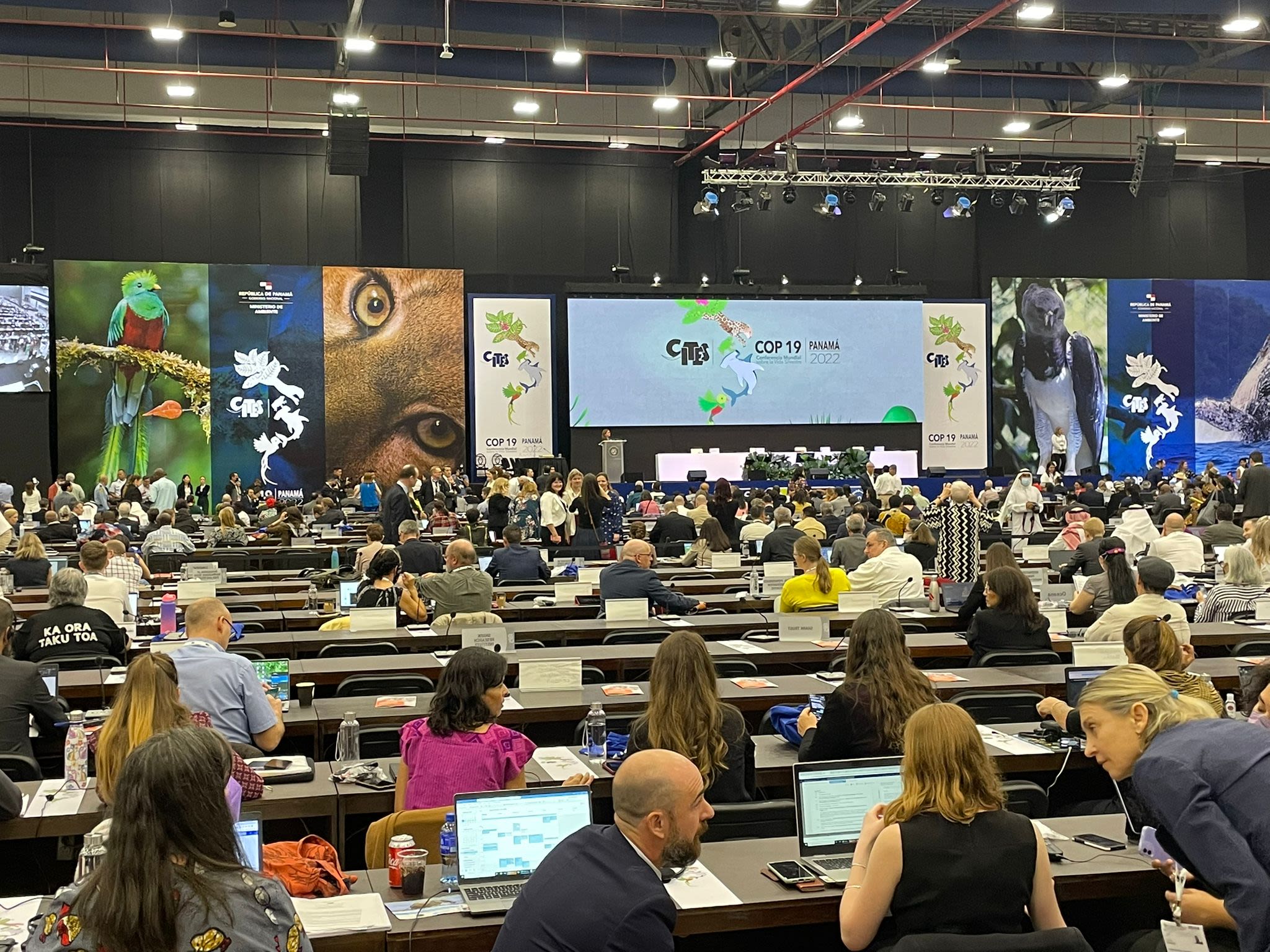
CITES CoP in Panama City, Panama. © WWF
CITES CoP in Panama City, Panama. © WWF
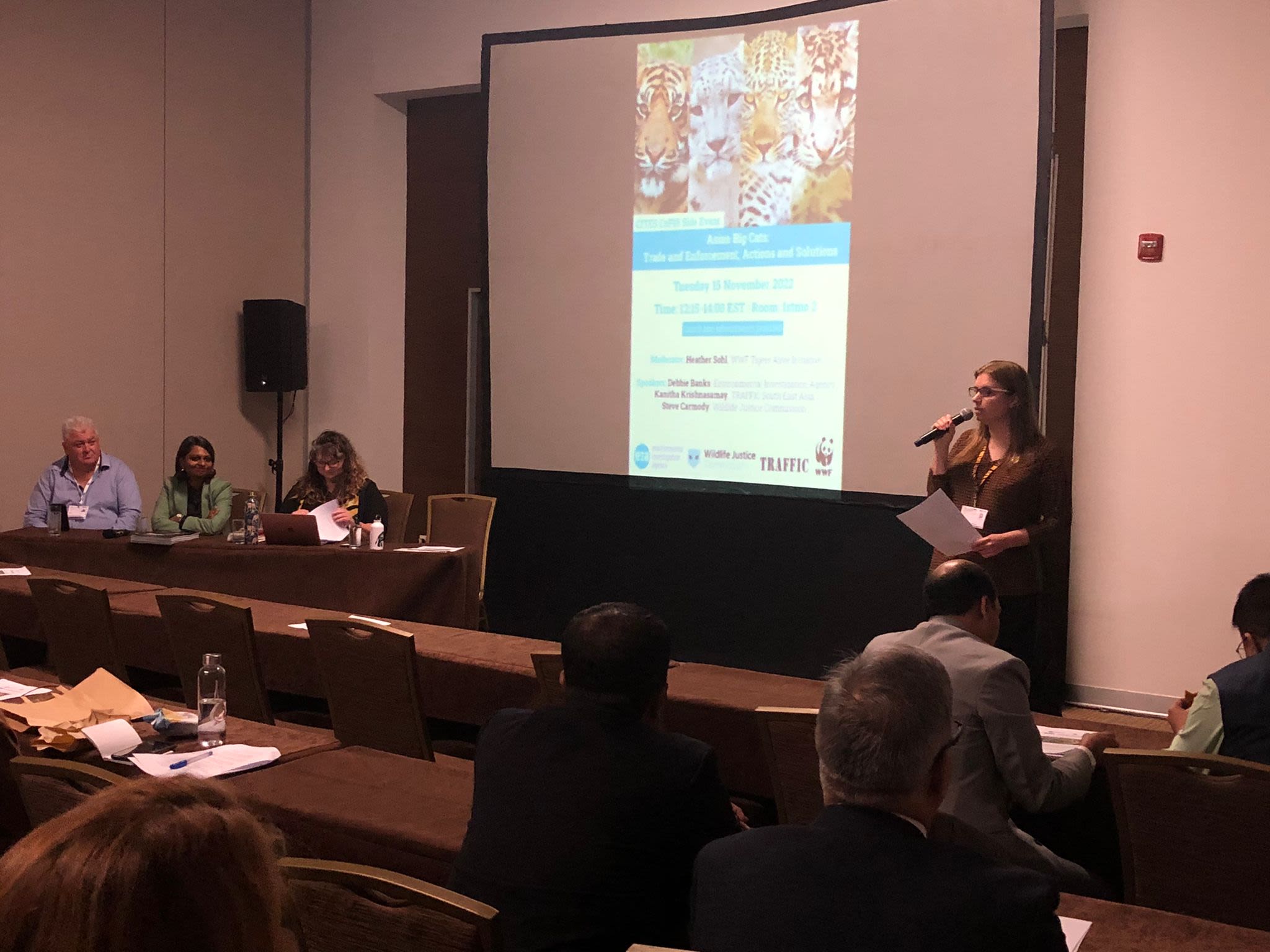
Heather Sohl, WWF Tigers Alive's Tiger Trade Lead at CITES CoP. © WWF
Heather Sohl, WWF Tigers Alive's Tiger Trade Lead at CITES CoP. © WWF
STOP THE SNARING CRISIS
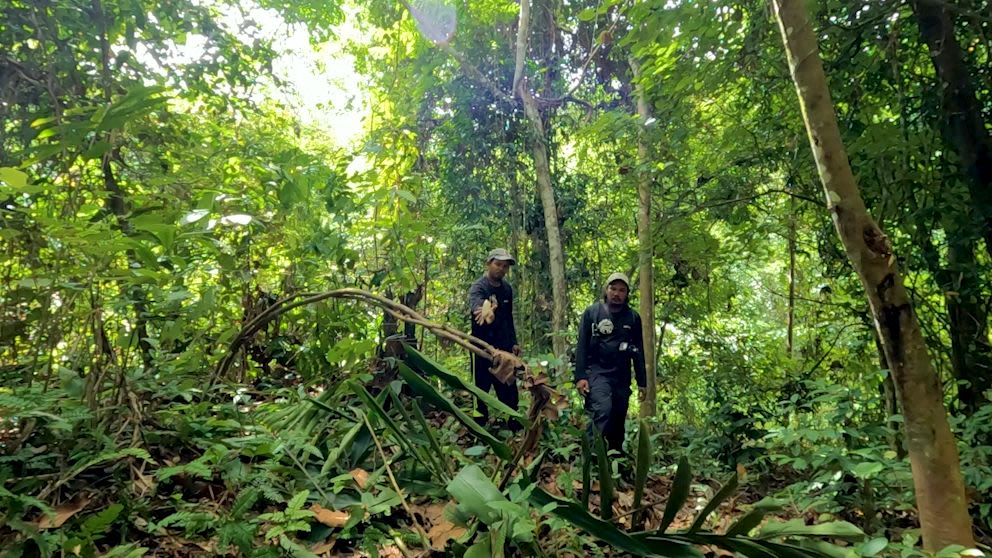
Snaring remains a major issue in tiger range countries and is emptying forests within and beyond Asia. WWF estimates that there are over 12 million snares present in the protected areas of Cambodia, Lao PDR and Viet Nam. Driven by the growing illegal wildlife trade poachers are increasingly using snares to trap wild tigers, leopards and other animals that are in high demand in the black market.
WWF launched the Snaring of Big Cats in Mainland Asia briefing which found a minimum of 387 Asian big cats had been captured in snares between 2012-2022. Further data suggests that 50% of tiger snaring incidents were indeed targeting tigers. The briefing, authored in partnership with TRAFFIC and released in September 2022, addresses a serious lack of reliable and analytical data on the snaring crisis in South Asia.
WWF continues to advocate for the recommendations detailed in briefing and raise awareness, particularly amongst protected area managers and governments in South Asia, of the threat which snaring has (particularly in buffer areas) on Big Cats. In Southeast Asia partners are increasingly recognizing the impact of snaring and it was for instance now included in the recent USAID call for proposals in Cambodia.
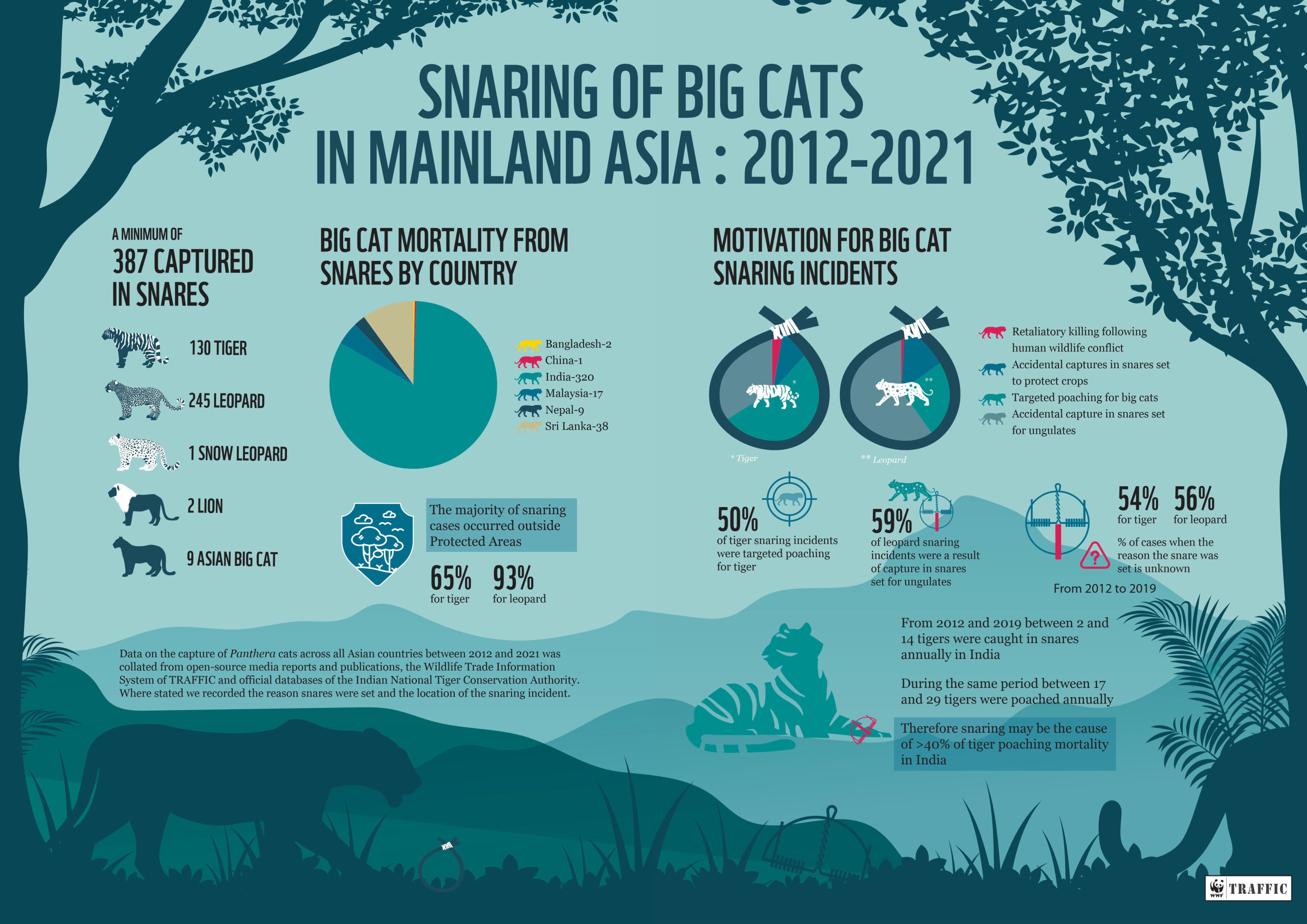

Dogs and their handlers receiving training. © TRAFFIC-India
Dogs and their handlers receiving training. © TRAFFIC-India
Canines for Felines: Wildlife Sniffer Dogs countering Tiger Crime in India
TRAFFIC-India and WWF-India work together on a programme for sniffer dog training which provides expert training for wildlife sniffer dog squads to detect and deter wildlife crime. This year the sniffer dog programme inducted six more dogs, bringing the total number of dogs supported by this initiative to over 90. Puppies of about six to nine months are provided training along with two handlers nominated by the participating state forest departments. During 2022, the sniffer dogs have helped in making breakthroughs in a number of tiger poaching cases in the country.
Addressing the challenges faced by rangers
On an average, two rangers per week lose their lives in the line of duty. This year WWF with partners released a paper, “Conservation Casualties - An analysis of on duty ranger fatalities (2006-2021)”, that highlighted a total of 1,535 confirmed on-duty ranger fatalities recorded during a 16-year period (2006–2021) with 554 of these casualties happening within tiger range countries. The data shows that felonious deaths, such as homicide, accounted for over 42% with the others a result of accident, illness, wildlife attacks or other unintentional work-related casualties.
The paper highlights the need for better recognition of rangers as frontline workers as other frontline forces such as firefighters and police. WWF is using the findings to urge ranger employers and the conservation community to address the poor working conditions of rangers and provide adequate health and life insurance.
To further our advocacy efforts on ranger welfare, this year WWF also published ‘Life on the Frontline of Tiger Protection’ in January 2022 which analysed the results from 1,599 surveys completed by public sector patrol rangers who work across all 10 countries that have wild tiger populations. The data puts in perspective the scale of challenges rangers face in tiger areas with about two-thirds saying they were not provided with insurance coverage for serious injury or on-the-job death. This, along with other evidence of poor working conditions for rangers, has resulted in further work being undertaken to develop ranger welfare standards.
The report also released for the first time an assessment of ranger densities in all tiger countries. The findings show that most tiger countries do not currently have rangers at adequate densities in tiger landscapes - this is particularly the case in Southeast Asia where regionally tiger numbers continue to decline. The results were presented to government representatives at the 4th Asian Ministerial Conference in January, and were distributed further by the Global Tiger Forum. WWF’s advocacy efforts for improved ranger welfare will impact beyond tigers given the employment welfare and safety implications for frontline staff is a global issue.
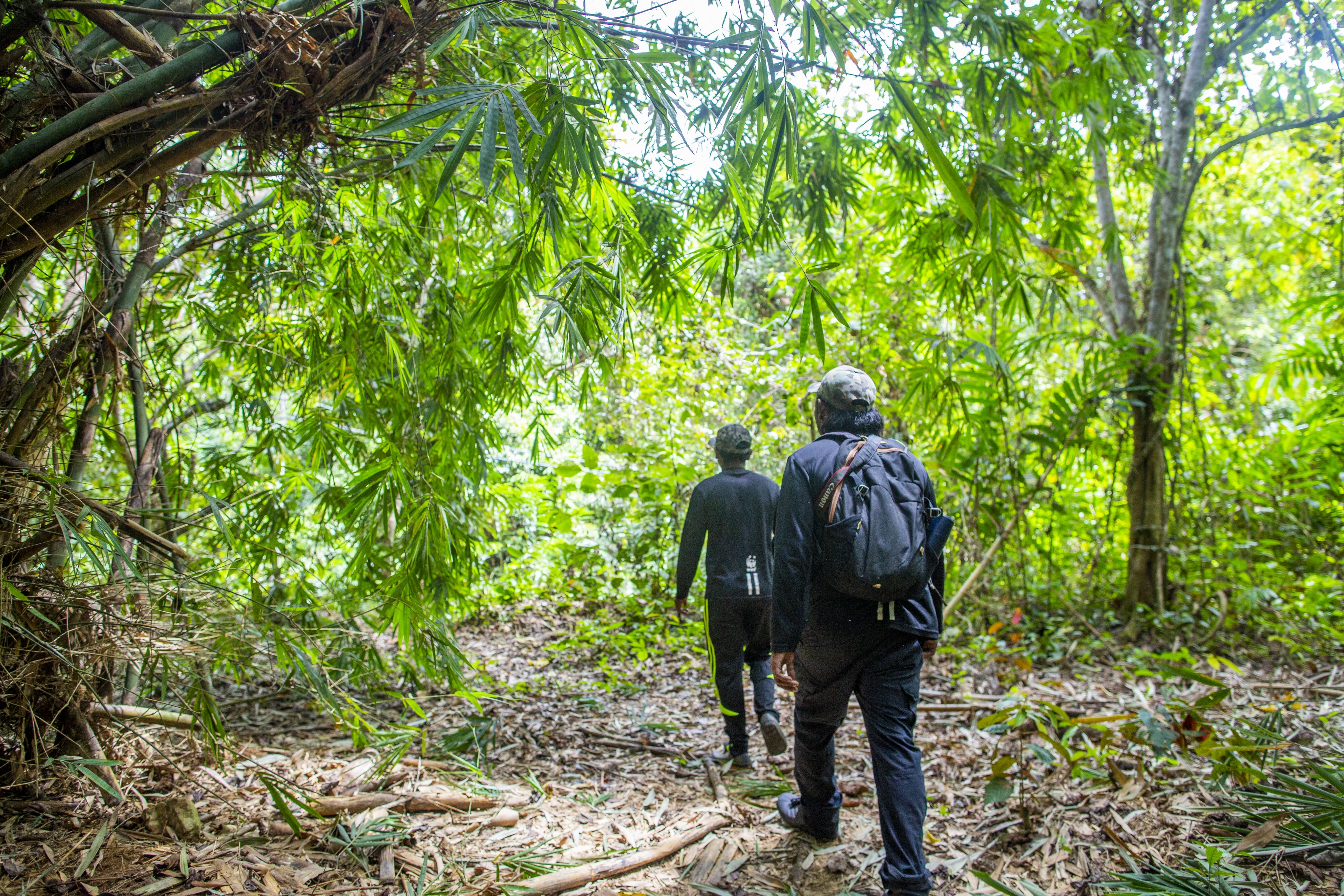
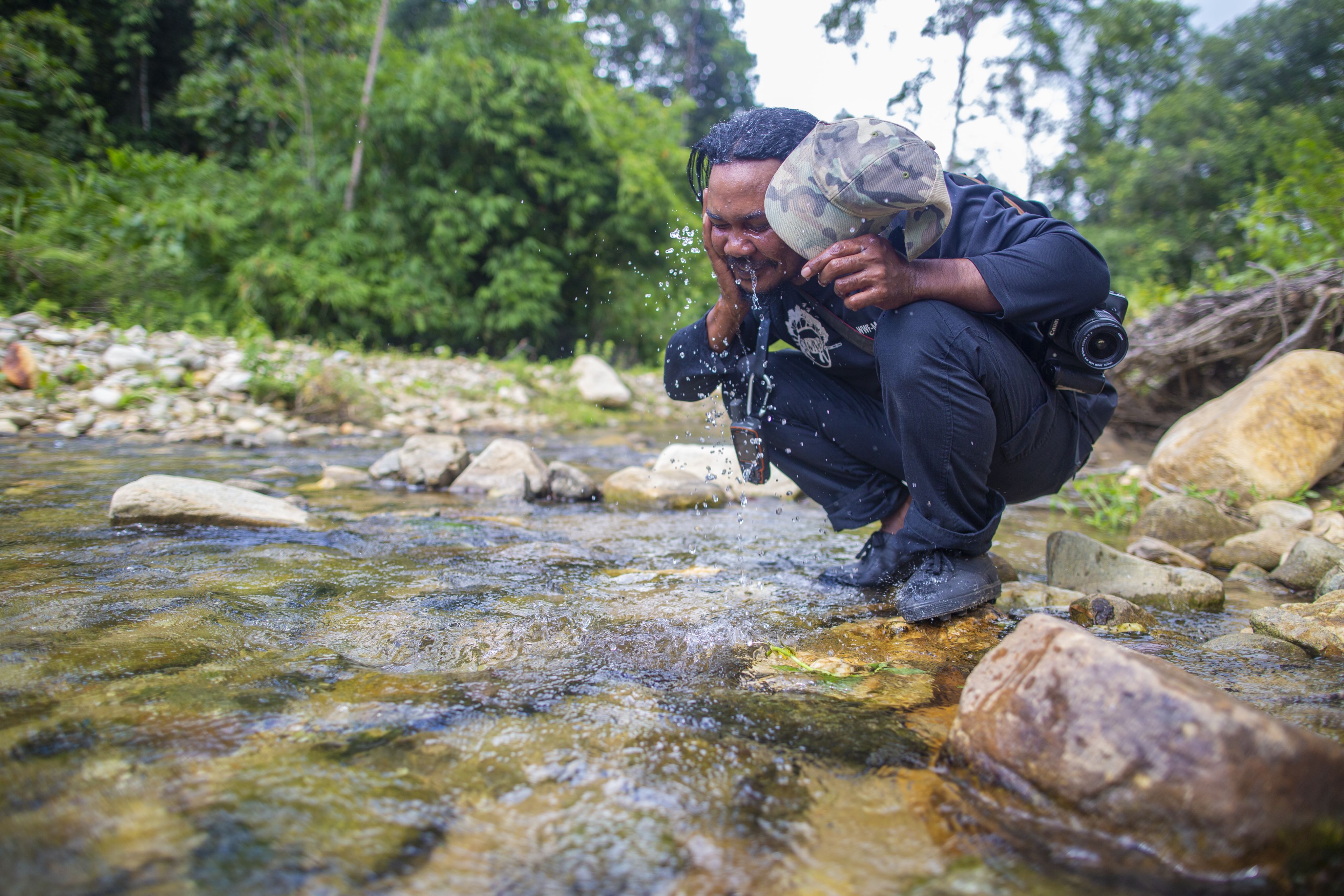
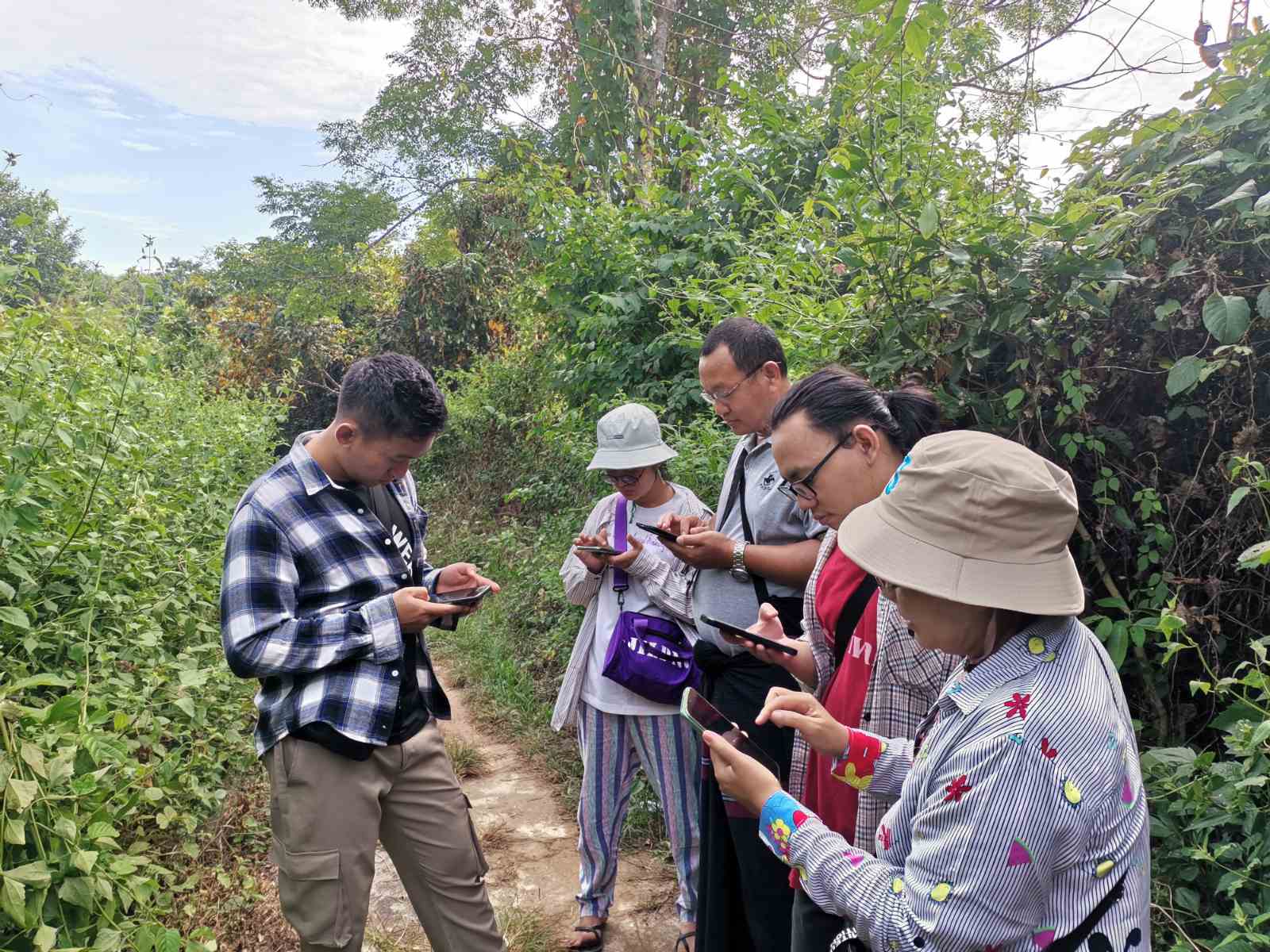
Citizens trialing SMART. © Htay Hla Aung / WWF-Myanmar
Citizens trialing SMART. © Htay Hla Aung / WWF-Myanmar
Roll-out and strengthening of SMART
This year WWF has continued to connect technology and conservation through the implementation and scaling of the Spatial Monitoring and Reporting Tool across tiger habitats. The release of SMART 7.0 in 2022 marks a significant step forward and through the SMART Mobile Data Collection field staff can now efficiently collect data while on the move, cutting down on time, energy and costs.
SMART Mobile Data Collection now allows communities to gather data and contribute to specific databases. This will have a significant impact on the ability of SMART to contribute to citizen science and community led data collection efforts. WWF-Myanmar are now using this system to ensure continuous monitoring of wildlife in the tiger landscape, as the political instability doesn’t allow direct engagement with relevant government authorities. WWF aims to expand this further in tiger range countries, particularly in Southeast Asia where tiger numbers are declining and are at high risk of poaching.
Institutionalising ranger training in Bhutan
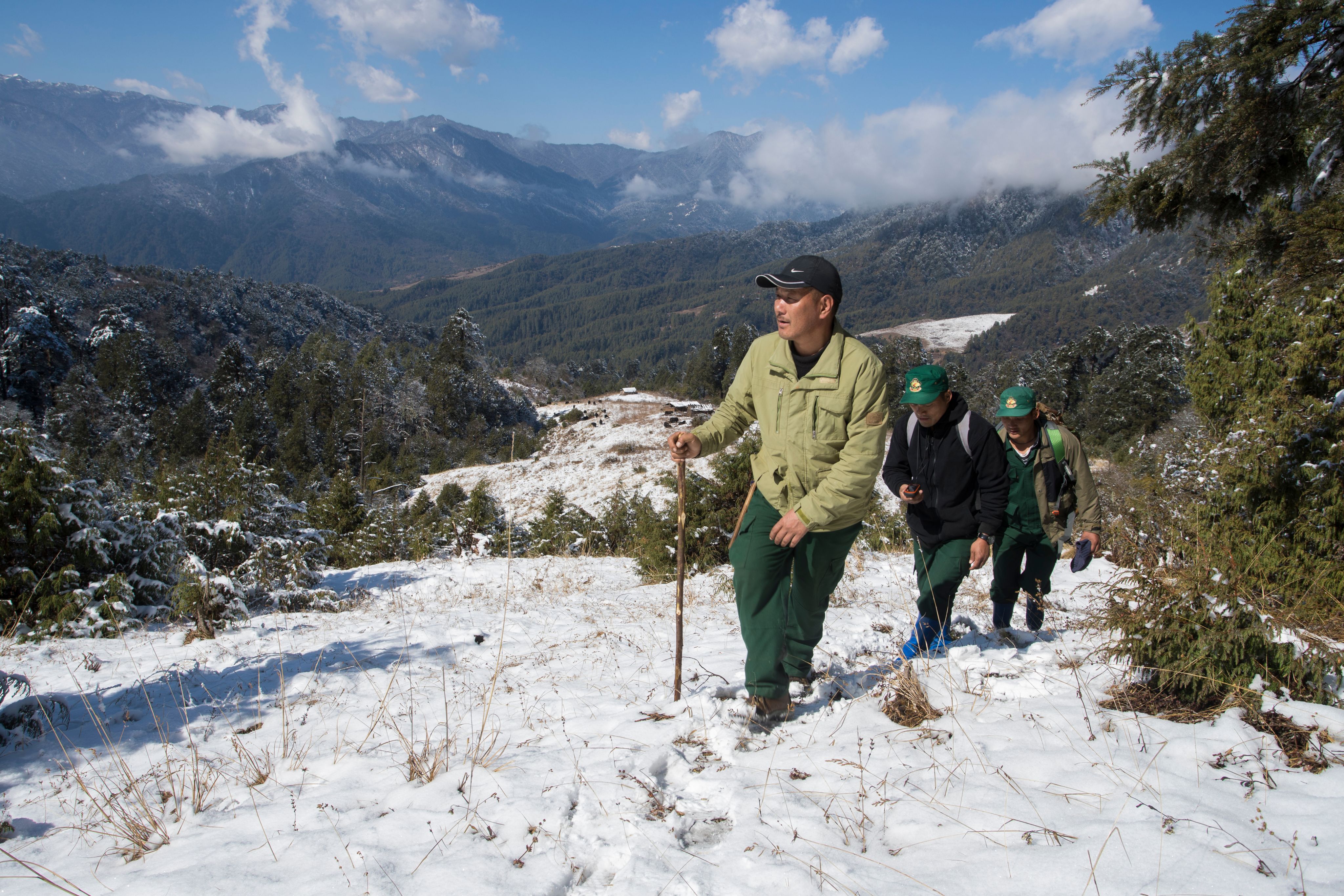
WWF continues to support institutionalisation of ranger training with active projects in Bhutan and India. In Bhutan, WWF has helped the Ugyen Wangchuk Institute for Conservation and Environment to amend and strengthen the existing training curriculum for rangers. The new curriculum was developed in consultation with the Department of Forest and Park Services officials, Southern African Wildlife College and forest rangers and is now endorsed by the Government of Bhutan. This sets uniform and optimal standards for ranger training in Bhutan and ensures that rangers have the skills they need to deliver on their duties.
Rangers play an indispensable role in maintaining the integrity of the protected and conserved areas while supporting the diverse rights of those they interact with. At a global level this year eight Ranger Code of Conduct workshops were conducted with 667 rangers trained from 63 countries by WWF in partnership with the Office of the United Nations High Commissioner for Human Rights, and 316 of those rangers were from tiger range countries. These workshops create awareness on the value and benefits of a Code of Conduct for rangers and ranger employers. In April the Code of Conduct guidelines, along with a explainer video, were launched to help ranger employers adapt and implement the Code of Conduct.
Assessing the impact of tiger farms on wild tigers
In 2022 WWF worked with North Carolina State University, US, to develop a system model looking at the impact of tiger farms on wild tigers, and the model has received positive feedback from a group of tiger trade, wildlife farming and economist experts. Our hope is that the model will be a valuable tool to inform the debate around the benefits versus risks of tiger farms to wild tigers. WWF views tiger farms as a threat to wild tiger conservation and are advocating for their phase out, but we look forward to the final results of this process, which we hope will inform decision making around tiger farms.
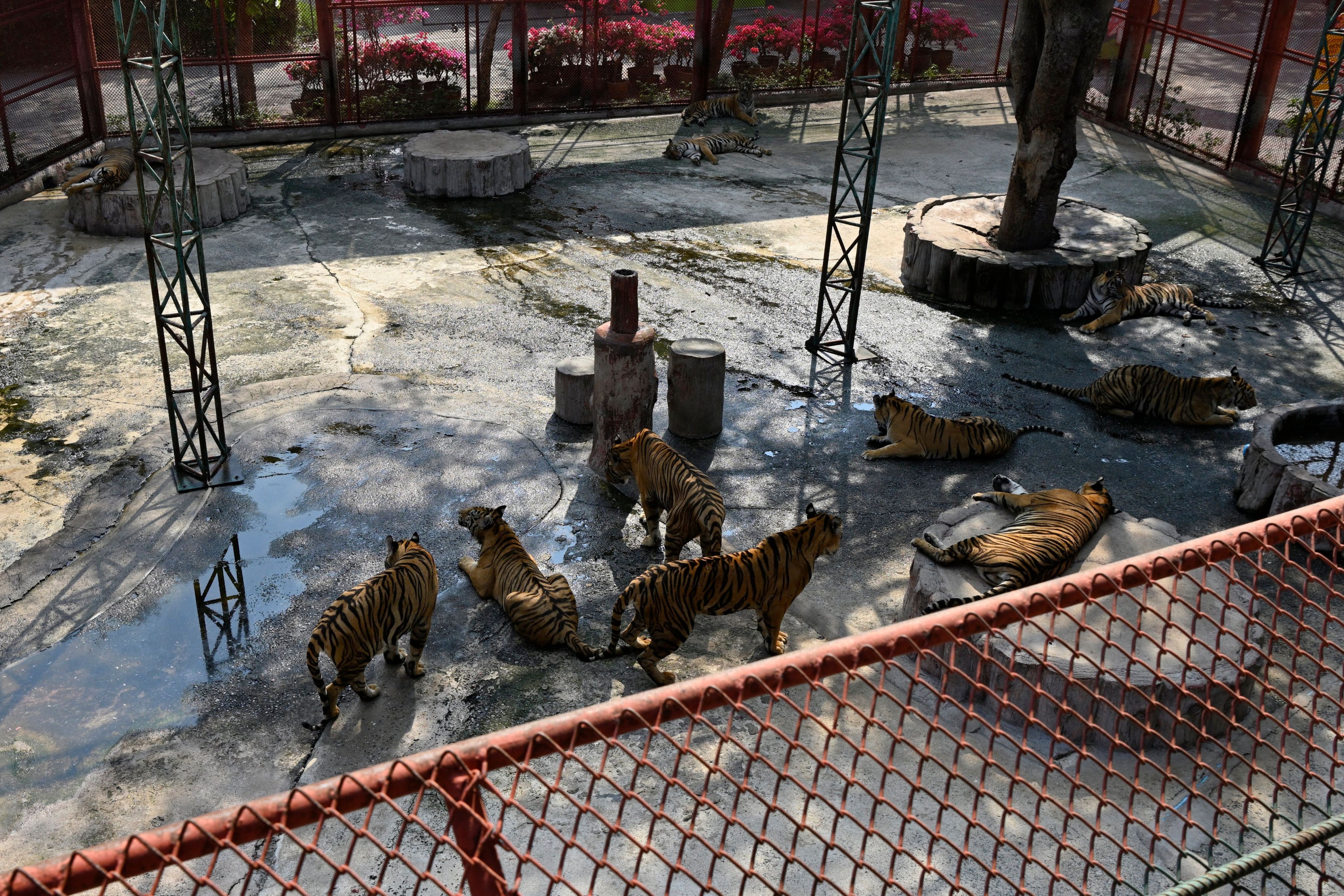

© WWF China
© WWF China
6 million people are reached through social marketing campaign in China
WWF-China is leveraging the powerful social media presence of Weibo to raise awareness of the plight of wild tigers around the world. Through the integration of Weibo commercial products and interactive content, WWF is urging users to protect endangered animals, join a boycott of tiger products and share messages with their networks. The campaign on Global Tiger Day 2021 and 2022 reached over 6 million people, with almost 1.77 million web users interacting with the campaign, joining the tiger protection group, and receiving commitment certificates stating they would not purchase illegal wildlife products.
In addition, the experience and capabilities in campaigning have enhanced the cooperation with the Chinese Customs, whom WWF is now jointly designing on initiatives to reduce trafficking of illegal wildlife products.
Preventing loopholes in wildlife special labelling system
WWF experts were consulted at the request of the National Forest and Grasslands Administration of China on wildlife special labelling systems.
After reviewing the entire policy regulation WWF China identified potential loopholes. The following recommendations were provided to the National Forest and Grasslands Administration of China:
- The need to strengthen strict bans on tiger products and rhino horns by making statements precisely in text instead of missing some key words.
- Disclosing all wildlife special labelling messages for public access and evaluation.
- Remove any potential wildlife species that could be taken advantage of by breeding facilities, by having special labelling including all listed species in CITES Appendix I.

Tiger bone wine (Property of the U.S. Fish and Wildlife Service). © WWF-US / Keith Arnold
Tiger bone wine (Property of the U.S. Fish and Wildlife Service). © WWF-US / Keith Arnold
